| Kevin Maher |
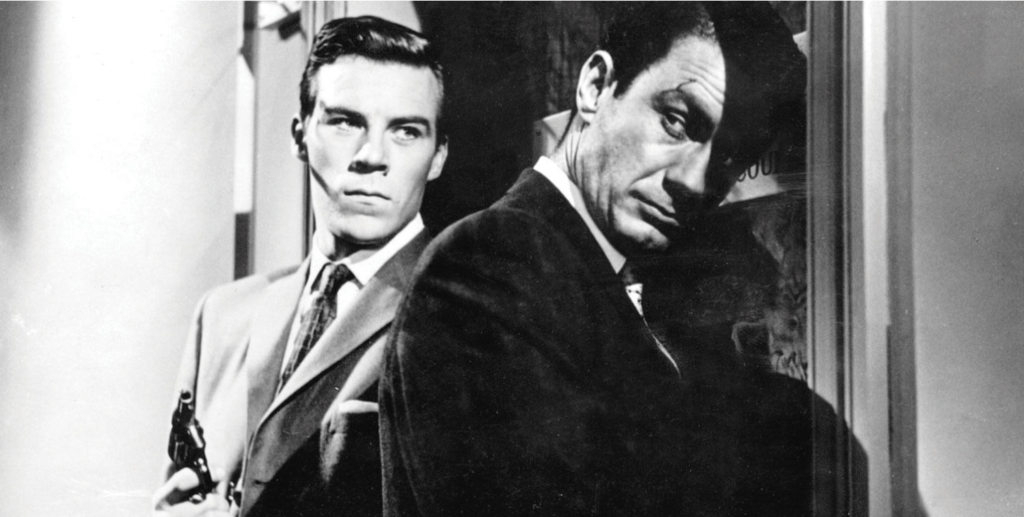
Underworld U.S.A plays at the Trylon Cinema from Friday, June 23 through Sunday, June 25. Visit trylon.org for tickets and more information.
Warning! Spoilers below. Proceed at your own risk.
Sam Fuller—I would be hard pressed to identify another filmmaker whose oeuvre represents not only their worldview, but their entire personality to the same extent. The iconic, if not tragically overlooked, writer/director of The Big Red One, Pickup on South Street, and The Naked Kiss made films on his terms, often with minuscule budgets, studio interference, and critical apathy. His legacy, however, is made through the patronage and respect of directors like Martin Scorsese, Jim Jarmusch, Steven Spielberg, and Francois Truffaut, who have praised and imitated Fuller’s films in print and on screen. Fuller was a unique filmmaker and his style could be jarring to the uninitiated. But his films, each in their own way, speak in a very guttural and personal manner that reflects the filmmaker himself. Issues as diverse as interracial relationships, racism, mental illness, and pedophilia are front and center in Fuller’s films and were often met with disdain by audiences of the 1950s and 60s. His worldview was decades ahead of his contemporaries, yet his shooting style and dialogue were simple and straightforward—perfectly reflecting Fuller’s time as a newspaperman in his teens. At his core, in fact, Fuller never strayed too far from that teenager, spinning yarns from his experiences, recasting reality from what he hoped humanity could become, but often reflecting a seedier and grittier reflection of man at his worst.
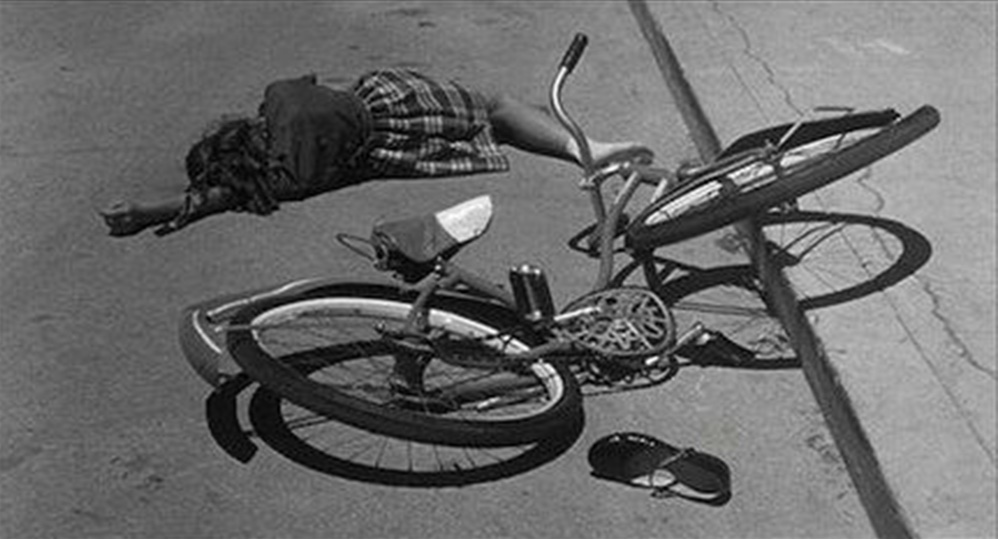
Cold-blooded murder drives Underworld USA
Underworld U.S.A. was made toward the end of Fuller’s run of theatrical films that started in 1949 with I Shot Jesse James, and before he started splitting his time with television projects in the 1960s. However, the film does have Fuller’s full DNA all throughout its 99-minute running time. Based on a Boston newspaper account of a nationwide criminal organization, the story had all the elements Fuller enjoyed but lacked a central throughline to connect its greater impact on society: it didn’t have a protagonist. Never one short for ideas, Fuller settled on revenge as the driving force of the story and proceeded to introduce protagonist Tolly Devlin as a teenager who witnesses the brutal slaying of his father at the hands of local crime bosses. Revenge was a not uncommon theme in Fuller’s films, with both The Naked Kiss and House of Bamboo dealing with the issue. In Underworld U.S.A., Tolly is singularly focused, biding his time for 15 years before fully enacting his plan.
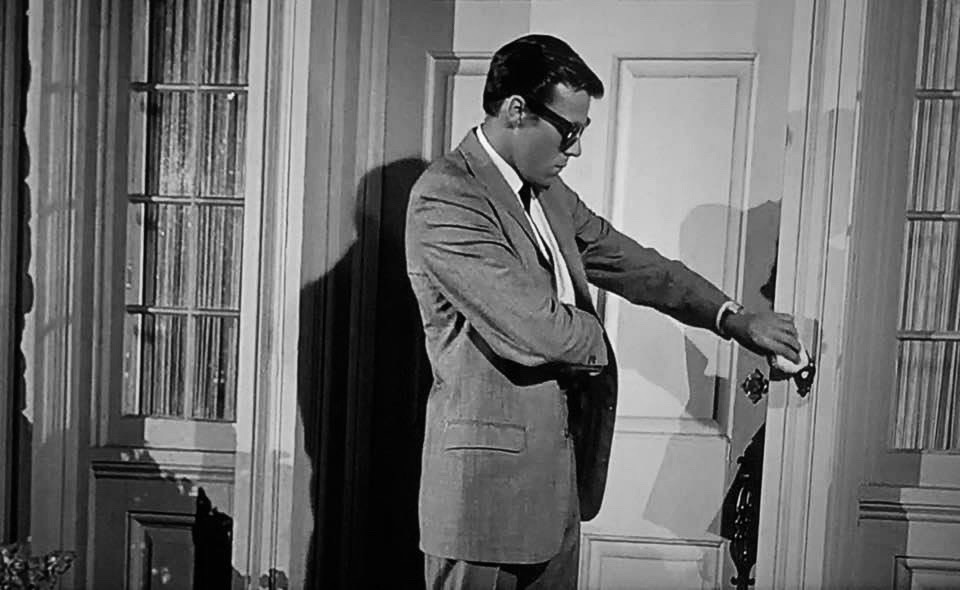
Death comes calling in Sam Fuller’s Underworld USA.
The film itself came at a time of great struggle for Fuller due to the death of his beloved mother, his divorce from his first wife, and the collapse of his lifelong goal of telling his story as an infantryman in World War II, a film he eventually made 20 years later called The Big Red One. What the film draws from Fuller’s life, however, is his unwavering belief in the outsider who is making a difference through a relentless patience for what they believe to be right and just. In Fuller’s case, it was telling the stories of people outside the margins of society, prostitutes, pickpockets, the poor, and the desperate. Tolly is just such a character. Fuller’s script never apologizes for Tolly’s criminal activities, even his exploitation of a gangster’s moll named Cuddles, who loves him, but it also paints him sympathetically as someone with a code of honor of sorts. Describing Tolly, Fuller writes,
“Ever since my characters were born, their lives have been harsh and unfair. They’re going to have to learn how to fight to survive. They are anarchists, turned against a system that has betrayed them. That’s why they end up taking the law into their own hands. Tolly goes one step further, exploiting the hateful system to get his enemies eliminated.”
(Fuller, 386)
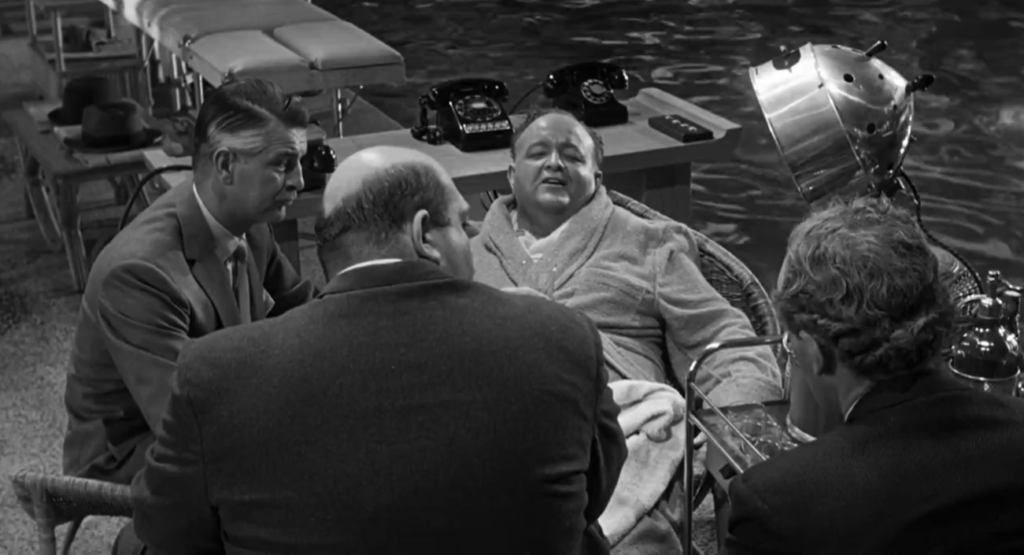
Criminal enterprise has a corporate feel to it.
Tolly eventually becomes the ultimate informant insider as he wheedles his way into the criminal organization while sharing information with the federal crime committee. Because he pits gangster against gangster and the feds against the gangsters, he is able to play both sides without ever being party to a crime or a killing. He is an equal opportunity exploiter, lying, stealing and tricking everyone in equal measure—all in the name of righteous revenge. Fuller’s film shows what would become the norm more than a decade later, the criminal organization is set up to reflect corporate America, with a defined hierarchy, corporate perks, as well as a reliance on profit margins and steady growth. Given the antiseptic moniker, National Projects, the cynical operation foreshadows criminal corporations in films like Point Blank and comments on the similarities between lawful and unlawful capitalistic greed.
As the dominoes begin to fall into place for Tolly’s plan, his focus becomes ruthless and righteous at the same time. Like Barbara Stanwyck’s character in Fuller’s Forty Guns (made four years earlier), the director isn’t afraid to challenge the viewer’s expectations of a protagonist. But here, he balances Tolly’s instincts with the Federal investigators’ integrity to create a gravitation force toward good. His interaction with Driscoll, the lead investigator, is more fatherly while National Projects head Connors is more sinisterly manipulative. He is being pulled toward the good, but never cracks until his revenge is complete. Then—and only then—does Tolly imagine a life of quiet happiness with Cuddles. Much like Detective Kojaku and Christine in The Crimson Kimono, Fuller unites two damaged souls at the conclusion of the story in a makeshift hopeful ending—not quite ensured, but soothing.
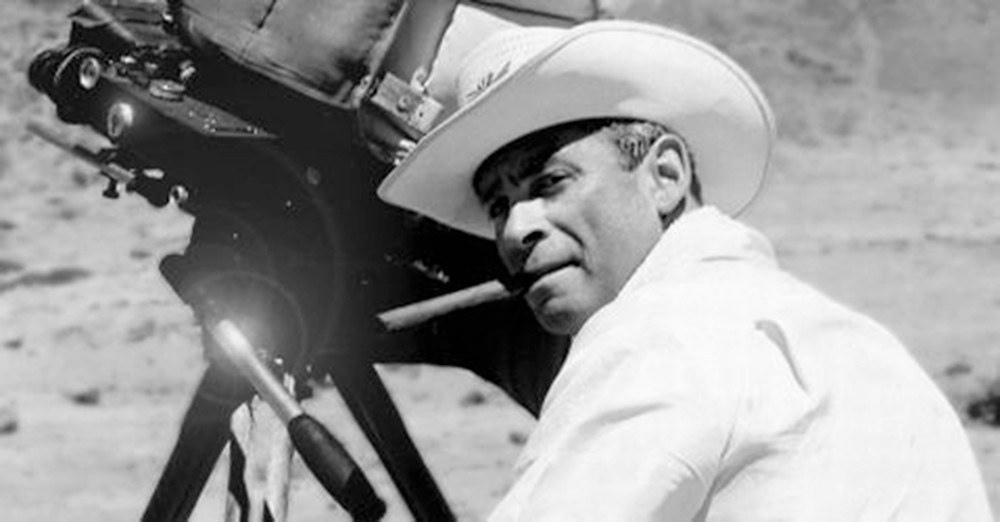
Sam Fuller, Director
Fuller was an optimist in the face of many life experiences that would have left a lesser man broken. The horrors on the streets of New York, covering the crime beat, or the Nazi internment camps that he helped liberate in World War II, could have crushed him, but by returning to storytelling, he was able to offer something positive to take away from his movies. They all are rough-hewn, often featuring the dregs of humanity, but there is always a simple, momentary beauty captured somewhere. It is In those moments that Fuller’s personal worldview dwells—take, for instance, the smalltime snitch Moe, played by Thelma Ritter in Pickup on South Street, for instance, or Cuddles. These characters overtly display a longing for something better, a humanity missing from almost every other character. Fuller’s Underworld U.S.A. may not be one of Fuller’s most memorable films, but to see and enjoy anything he made is a unique experience.
To read more about Sam Fuller’s films, visit my blog for a list of the Top 10 Sam Fuller films.
Bibliography:
Fuller, Samuel. A Third Face: My Tale of Writing, Fighting, and Filmmaking. New York: Alfred A. Knopf, 2002.
Edited by Olga Tchepikova-Treon
